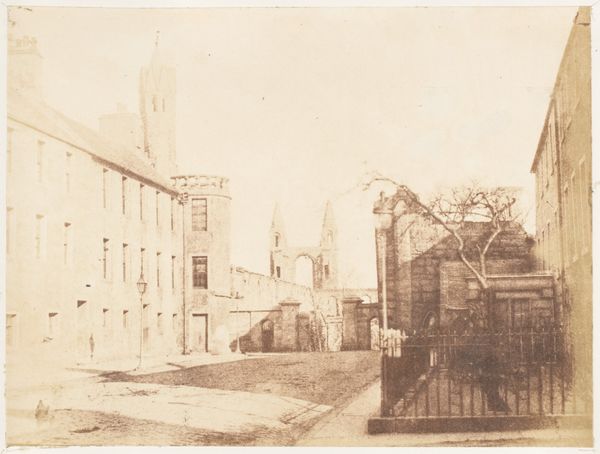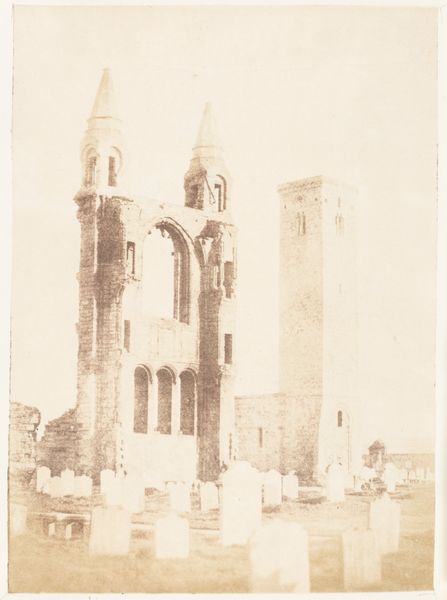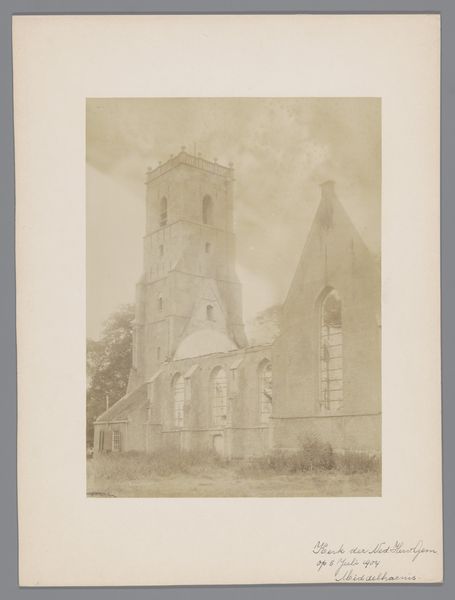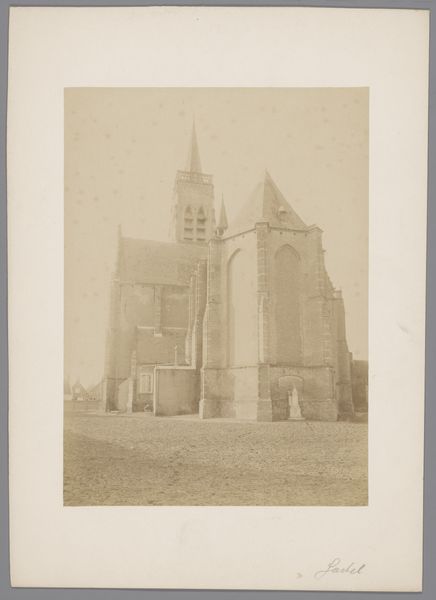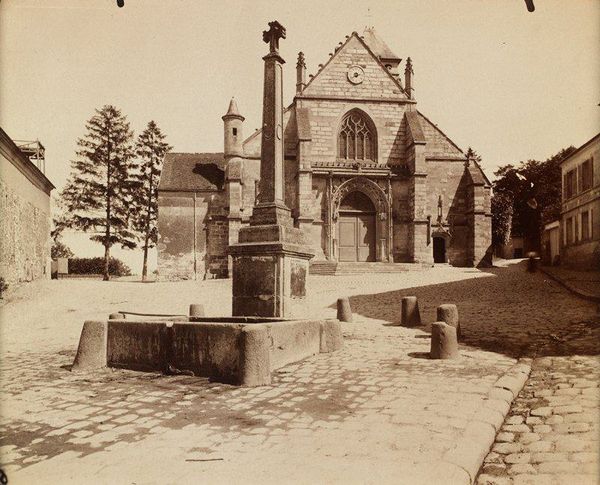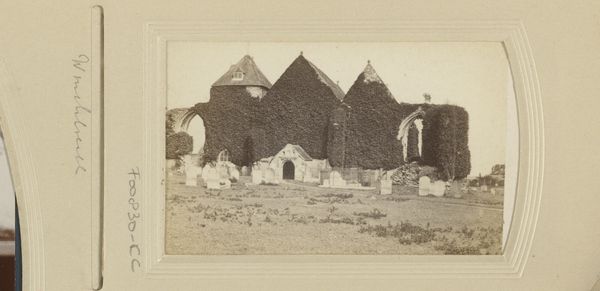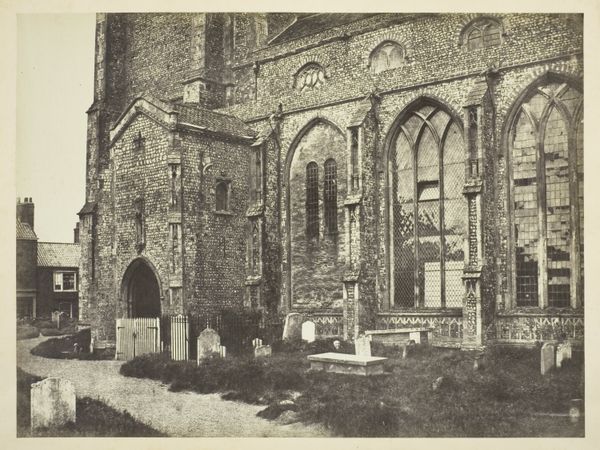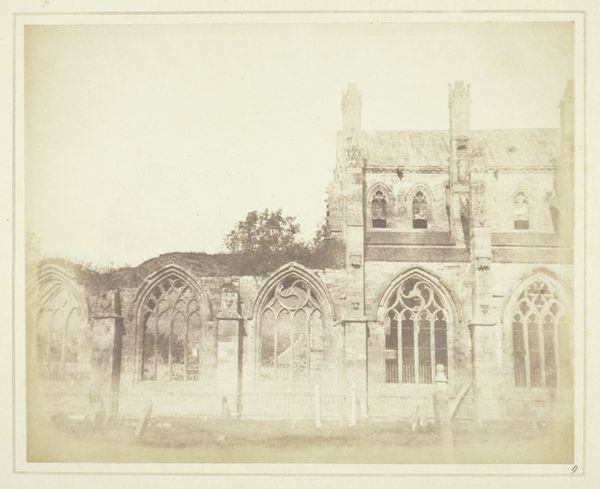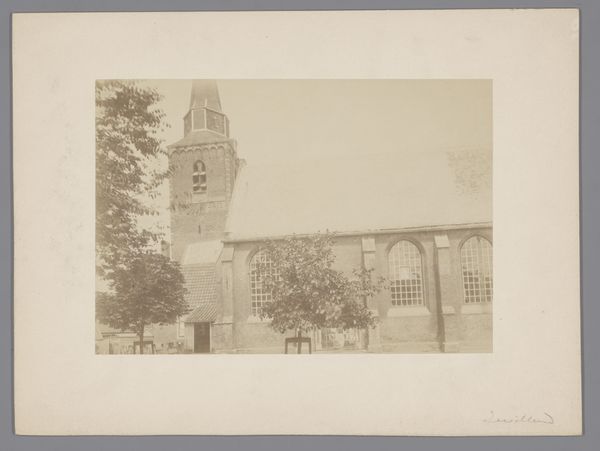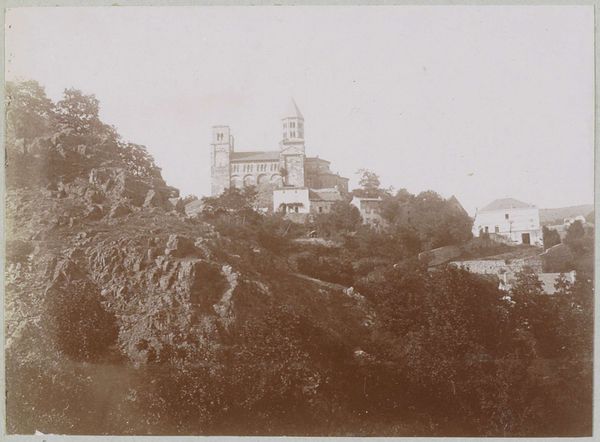
daguerreotype, photography, albumen-print
#
landscape
#
daguerreotype
#
photography
#
romanticism
#
cityscape
#
albumen-print
Copyright: Public Domain
Editor: This albumen print, entitled "St. Andrews," was created sometime between 1843 and 1847 by Hill and Adamson. Looking at this print, I’m struck by its almost ghostly quality, and I wonder: what aspects of materiality and production most capture your attention in this piece? Curator: I’m drawn to the laborious process involved in creating this image, especially considering it’s from such an early period of photography. Think about the materials involved—the silver salts, the paper, the meticulous developing process. These aren't simply neutral tools, they shape what's depicted. Editor: How so? Curator: The long exposure time required for albumen prints meant capturing a static scene. That influences the representation of St. Andrews. Everything is stilled, lending to that sense of decay and solemnity you mentioned, but it’s not solely aesthetic. It reflects the limitations and affordances of the technology, and also points to the accessibility – or inaccessibility – of early photographic processes and the materials themselves. Photography was certainly not immediate or easy. The labor and cost associated with creating it must be a defining part of any interpretation. It reminds us that even seemingly objective records are deeply embedded in material conditions and a society of laborers. Editor: That makes me consider the cost to create images at this time; it feels at odds with how common picture-taking is now. Thank you for highlighting the impact that production has on our viewing. Curator: Exactly, it shifts our focus from simple representation to the socioeconomic context in which art is produced. Considering the economic relations of that era adds another important layer to how we should think of its importance and artistic merits.
Comments
No comments
Be the first to comment and join the conversation on the ultimate creative platform.

